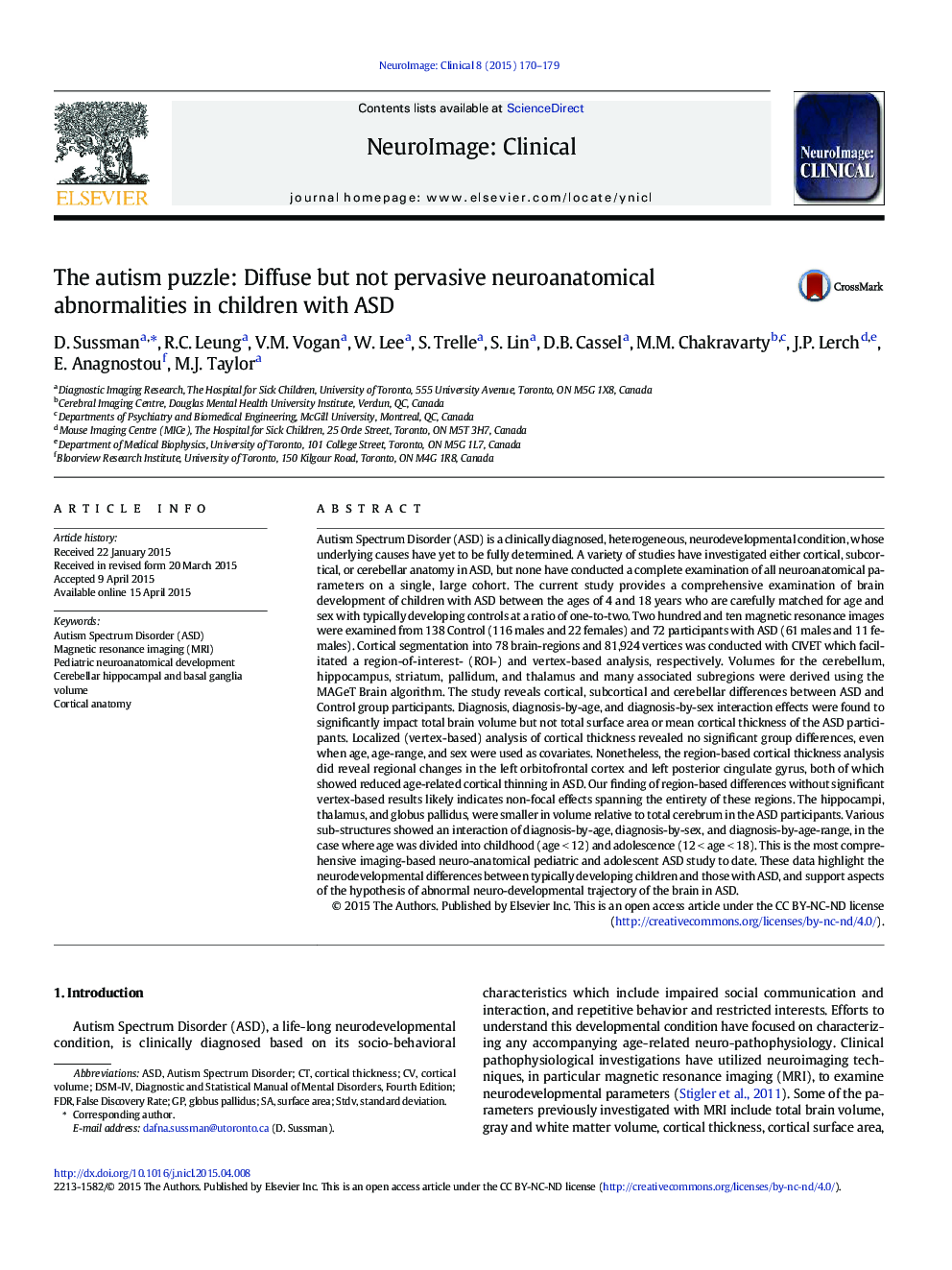| کد مقاله | کد نشریه | سال انتشار | مقاله انگلیسی | نسخه تمام متن |
|---|---|---|---|---|
| 3074993 | 1580959 | 2015 | 10 صفحه PDF | دانلود رایگان |

• Thorough analysis of neuroanatomical patterns in children and adolescents with ASD
• Cortical, subcortical, and cerebellar development is assessed.
• Total brain volume is smaller in males with ASD compared with Controls.
• Cortical thickness in ASD does not decrease between childhood and adulthood.
• Hippocampi, thalamus, globus pallidus and cerebellum are relatively smaller in ASD.
Autism Spectrum Disorder (ASD) is a clinically diagnosed, heterogeneous, neurodevelopmental condition, whose underlying causes have yet to be fully determined. A variety of studies have investigated either cortical, subcortical, or cerebellar anatomy in ASD, but none have conducted a complete examination of all neuroanatomical parameters on a single, large cohort. The current study provides a comprehensive examination of brain development of children with ASD between the ages of 4 and 18 years who are carefully matched for age and sex with typically developing controls at a ratio of one-to-two. Two hundred and ten magnetic resonance images were examined from 138 Control (116 males and 22 females) and 72 participants with ASD (61 males and 11 females). Cortical segmentation into 78 brain-regions and 81,924 vertices was conducted with CIVET which facilitated a region-of-interest- (ROI-) and vertex-based analysis, respectively. Volumes for the cerebellum, hippocampus, striatum, pallidum, and thalamus and many associated subregions were derived using the MAGeT Brain algorithm. The study reveals cortical, subcortical and cerebellar differences between ASD and Control group participants. Diagnosis, diagnosis-by-age, and diagnosis-by-sex interaction effects were found to significantly impact total brain volume but not total surface area or mean cortical thickness of the ASD participants. Localized (vertex-based) analysis of cortical thickness revealed no significant group differences, even when age, age-range, and sex were used as covariates. Nonetheless, the region-based cortical thickness analysis did reveal regional changes in the left orbitofrontal cortex and left posterior cingulate gyrus, both of which showed reduced age-related cortical thinning in ASD. Our finding of region-based differences without significant vertex-based results likely indicates non-focal effects spanning the entirety of these regions. The hippocampi, thalamus, and globus pallidus, were smaller in volume relative to total cerebrum in the ASD participants. Various sub-structures showed an interaction of diagnosis-by-age, diagnosis-by-sex, and diagnosis-by-age-range, in the case where age was divided into childhood (age < 12) and adolescence (12 < age < 18). This is the most comprehensive imaging-based neuro-anatomical pediatric and adolescent ASD study to date. These data highlight the neurodevelopmental differences between typically developing children and those with ASD, and support aspects of the hypothesis of abnormal neuro-developmental trajectory of the brain in ASD.
Journal: NeuroImage: Clinical - Volume 8, 2015, Pages 170–179